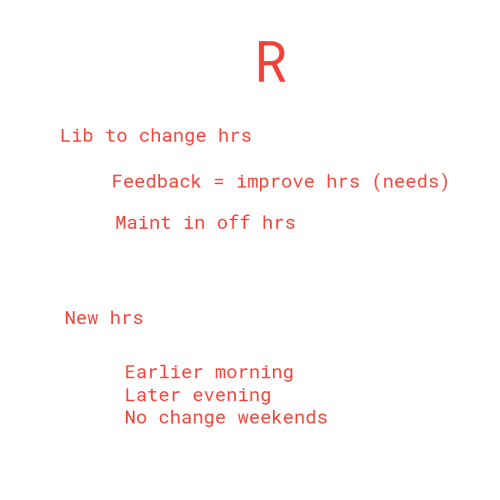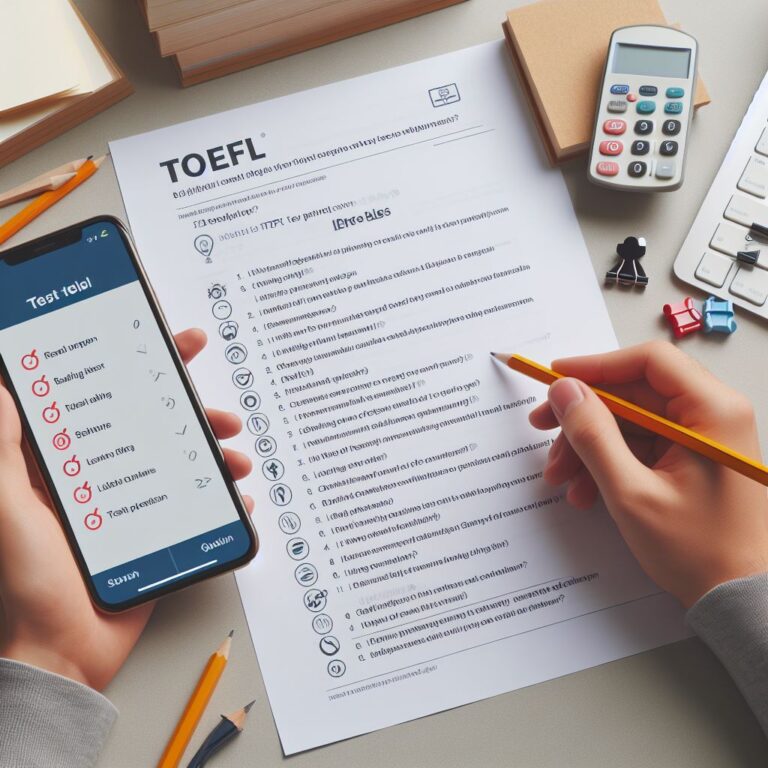TOEFL Speaking Question 2

Key Points
1. Overview of TOEFL Speaking Question 2: This task assesses the ability to synthesize and articulate ideas from a reading passage and a listening conversation, requiring effective note-taking and integration of information.
2. Structure and Preparation: The task involves reading a short passage, listening to a related conversation, and then delivering a structured response within 60 seconds, demonstrating clarity, coherence, and language proficiency.
3. Scoring Criteria: Responses are evaluated based on delivery (clarity and fluency), language use (grammar and vocabulary), and topic development (coherence and completeness), with each criterion scored on a scale from 0 to 4.
What you will find in this guide:
TOEFL Speaking Question 2, the Integrated Task
The TOEFL Speaking Question 2, known as the Integrated Speaking Task, is designed to assess your ability to synthesize and articulate complex ideas in English, a crucial skill for academic success.
TOEFL Speaking Question 2 involves a multi-step process where you’ll encounter a campus-related situation through a short reading passage, followed by a related listening task. Your job is to integrate these two sources of information into a coherent spoken response¹².
The key to excelling in this task lies in your ability to quickly digest the reading material, attentively listen to the dialogue, and then craft a response that not only summarizes the content but also demonstrates your language proficiency.
To help you prepare, we’ll delve into strategies for effective note-taking, tips for improving your listening comprehension, and methods for organizing your thoughts swiftly and efficiently. We’ll also provide you with templates and phrases that can serve as a foundation for your responses, ensuring you sound natural and confident.
Remember, a high-scoring response is not just about what you say, but how you say it. Pronunciation, intonation, and fluency play significant roles in how your speech is evaluated. Therefore, we’ll explore ways to enhance your speaking abilities to sound more like a native speaker.
The Structure of Question 2
TOEFL Speaking Question 2, also known as the Integrated Speaking task, is a multi-faceted challenge that requires you to combine your English-language skills—listening and speaking, or listening, reading, and speaking—just as you would in a real-world academic setting.
Here’s a step-by-step breakdown of what you can expect:
1. Reading a Short Passage: You’ll be presented with a brief announcement, article, or letter, typically related to campus life. This text will describe a change happening at the university or suggest a new policy¹. You’ll have about 45-50 seconds to read and take notes on the main points and supporting details.
2. Listening to a Conversation: After the reading part, you’ll listen to a recording of two students discussing the change mentioned in the passage. The conversation lasts between 60-90 seconds. One of the students will express a strong opinion, either in favor or against the change, and provide reasons for their stance. This is the part where your note-taking skills will come in handy, as you’ll need to capture the essence of their argument.
3. Preparing Your Response: Once you’ve absorbed both the reading and listening materials, you’ll have 30 seconds to prepare your response. This is when you organize your thoughts and decide how to structure your answer effectively.
4. Delivering Your Response: Finally, you’ll have 60 seconds to speak. Your response should explain the student’s opinion from the recording and the reasons behind it, integrating information from both the reading and listening sources.
The goal here is not just to summarize the content but to demonstrate your ability to synthesize information and express it in a clear, coherent manner. To score well, you must sound comfortable and natural while speaking, showcasing your language proficiency.
Scoring Criteria
Understanding the scoring criteria for TOEFL Speaking Question 2 is essential for anyone aiming to achieve a high score. As a language enthusiast and educator, I’ve learned that knowing what examiners look for can significantly influence your preparation and performance.
The scoring for Speaking Question 2 is based on three main criteria:
Delivery: This refers to the clarity of your speech, including pronunciation and intonation. Your speech should be fluid and easy to understand, with good pacing and natural expression (ETS, 2021).
Language Use: This criterion evaluates your use of grammar and vocabulary. A high-scoring response will demonstrate a strong command of English, with varied sentence structures and appropriate word choice (ETS, 2021).
Topic Development: This is about the coherence and completeness of your response. You should clearly present the main points from both the reading and listening materials, linking them logically and elaborating on them with relevant details (ETS, 2021).
Each of these components is scored on a scale from 0 to 4, with 4 being the highest. The scores are then averaged to give you a raw score for the task. This raw score is converted to a final scaled Speaking score on a scale of 0-30 (ETS, 2021).
A high-scoring response typically fulfills the task’s demands with minor lapses. It should be intelligible and exhibit sustained, coherent discourse. Minor difficulties with pronunciation or intonation that do not affect overall intelligibility are acceptable (ETS, 2021).
Effective use of grammar and vocabulary is crucial, and the response should show a degree of automaticity with good control of both basic and complex structures. While some minor errors are permissible, they should not obscure the meaning (ETS, 2021).
Topic development is another critical aspect. The response should be well-developed and coherent, with clear relationships between ideas or a clear progression of ideas. The response should be mostly coherent and sustained, conveying relevant ideas and information (ETS, 2021).
To prepare for the TOEFL speaking exam, practice speaking exercises that focus on these criteria. Record yourself to evaluate your delivery, seek feedback on your language use, and structure your responses to ensure clear topic development.
Guide to Question 2
Step 1: Read & Take Notes
When preparing for TOEFL Speaking Question 2, it’s important to organize your note paper effectively. Start by dividing your paper in half and use one side specifically for notes about the reading passage. This helps keep your information structured and easy to refer to during your response.
Next, quickly identify and note down what the main change mentioned in the passage is. This allows you to clearly understand and remember the central topic being discussed.
Then, clearly list each of the two reasons for the change, including a few key details for each reason. This will provide you with a comprehensive understanding of the passage and help you form a well-rounded answer.
Now, let’s take a look at a sample reading passage in question 2. The reading will look something like this:
Library Hours to Change
The campus library will have new operating hours starting next semester. This change has been implemented by the university administration in collaboration with the library staff and student representatives. The primary reason for the new schedule is the feedback from students and staff indicating that the current hours do not meet their needs. Additionally, the library will undergo maintenance during off-hours to improve facilities and services. As part of this update, the library will now open earlier in the morning and close later at night on weekdays to accommodate students who need access to resources for their studies. The weekend hours will remain unchanged. This adjustment aims to provide better support for students’ academic success.
How take effective notes:
When preparing for TOEFL Speaking Question 2, it’s useful to use short forms and symbols to save time while taking notes. For example, you can write “lib” instead of “library” and “maint” for “maintenance.” Use “hrs” to indicate hours, and X to indicate “can’t” or “not.” These shortcuts help you take notes quickly and efficiently. For instance, you can see my notes in the picture below about the sample reading passage you read above.

Step 2: Listen to the Conversation and Take Notes
Use the other half of the paper to take notes about the conversation. Quickly note whether the student agrees or disagrees with the change. I used “X” to indicate that they don’t agree. Next, note how they respond to each of the reasons in the reading. Use arrows to show how the reading and listening reasons match up.

Step 3: Take note of context cues!
In the TOEFL integrated speaking tasks, you can use context cues from the reading and listening sections to guide your response and effectively demonstrate a range of vocabulary and grammar. Context cues are words and phrases used in the text and in the conversation that introduce a concept you can use in your response.
For example in the following sample text, the idea of free loading is mentioned. You can use this word (idea) effectively to better support your response and show the use of a range of words at the same time. You can also find a third conditional structure at the end of the conversation in the listening section. This could also a good structure to use in your response. Remember that you don’t have to use the exact words that came out of the guys’s mouth! Just use the structure with your own words.
Step 4: Prepare your response
Summarizing the situation described in the reading passage.
Clearly state whether the speakers agreed or disagreed with the text.
Refer to specific points, examples, and reasons to support your response,
Recommended Format
You can always use the same template to organize your answer to TOEFL speaking question 2. Try this one:
Reading Main Point (6 seconds)
- “According to the announcement/article/letter…”
Reasons from Reading (6 seconds)
- “This is because ___ and ___.”
Transition (2 seconds)
- “The man/woman opposes this.”
- “The man/woman supports this.”
- “The man/woman has a mixed opinion of this.”
First Reason (23 seconds)
- “To begin with, he/she points out that…”
Second Reason (23 seconds)
- “Moreover, he/she argues that…”
Check out more TOEFL Speaking Templates here
Sample Question:
Read the following text from a college course manual and listen to the conversation that follows it. Then, answer the question.
Course: GL202
Assessment Procedure Cont.Part 3.6 – Group Work
The geology department is aware of the problems surrounding group work, and its unpopularity among students. In some cases, students do not contribute and thus gain marks they do not deserve; therefore, stronger students are frustrated at being held back by weaker students. Similarly, it is very difficult for tutors to award marks for group projects, as it is unclear who is responsible for each part.
However, the department feels that there is a great deal to be gained from group work, in terms of self-organization and communication skills. To this end, we plan to introduce a system whereby the group work itself is not formally assessed, but each student will undertake an individual piece of work based on the group project, which will be designed to ensure participation in the project.
Question: The man expresses his opinion of group work. State and explain his opinion. Compare his opinion with the opinion of the geology faculty.
Tips
- Make sure to mention ideas from both the passage and the conversation
- Use transition phrases to transition between the ideas mentioned in the passage and the ones mentioned in the conversation.
- Use a mix of simple and compound sentences.
- Use context cues to give your response linguistic variety. Use the same complex words and phrases used in the text and the conversation to give your response “Range”.
- Speak normally and naturally.
Speaking Checklist
To assess your own speaking, it is a good idea to download and use the checklist linked here. Using this checklist makes you aware of the features you need to show in your response and gives you an idea of what you need to put more effort and work on.






